In this article, I’m excited to share a curated one-week itinerary through Eastern Germany, taking you from the dynamic streets of Berlin to the historic charm of Dresden, the natural beauty of Saxon Switzerland National Park, and the cultural richness of Leipzig.
Eastern Germany is a tapestry woven with history, art, and landscapes that tell stories of past empires, artistic revolutions, and nature’s enduring allure.
Eastern Germany holds a special place in my heart. It’s where every corner has a tale, every meal is a journey, and each city feels like a chapter from a history book come to life. Berlin, with its layers of history, modernity, and relentless energy, offers a thrilling start.
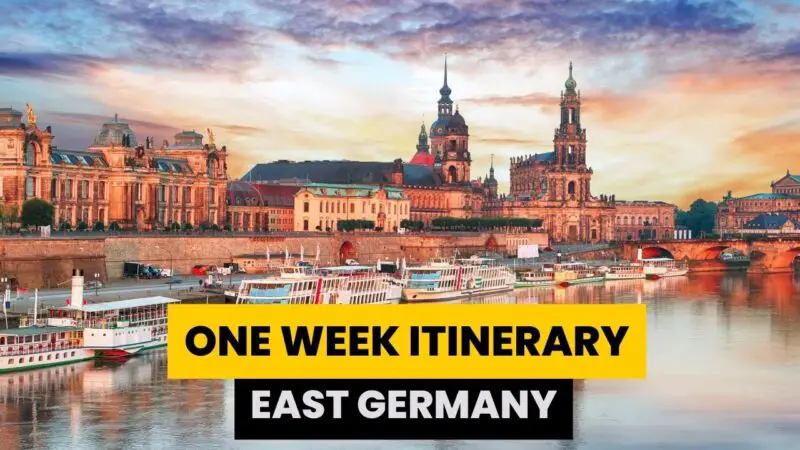
From there, the elegance and resilience of Dresden, coupled with nature’s masterpiece at Saxon Switzerland National Park, showcases the region’s diverse appeal.
Leipzig adds the final brushstroke to this rich picture, blending historical depth with a vibrant contemporary scene. Whether it’s walking in the footsteps of musical legends, discovering art in unexpected places, or savoring the local cuisine, Leipzig is a celebration of culture.
Join me as we explore Eastern Germany, where history and modernity dance a seamless waltz. This itinerary promises not just a journey through picturesque landscapes, but an immersive dive into the heart and soul of this remarkable region. Let’s embark on this adventure together, uncovering the stories, flavors, and sights that make Eastern Germany truly unforgettable.
Traveling to Germany? Click here to download your free Germany Trip Planning checklist. We’ll help you get ready for your trip!
Incredible One Week Eastern Germany itinerary
Now that we’ve set the stage for our journey through Eastern Germany, it’s time to dive into the specifics with our detailed itinerary. This next section is your roadmap, guiding you through vibrant cities, historic sites, breathtaking natural wonders, and cultural treasures.
Note that this itinerary moves FAST! If you are someone who wants to see and experience the most of every day, you’ll LOVE this itinerary. If you prefer to take things slower, cut back this itinerary. Pick your favorite four days and spread them into seven days for a more relaxed pace.
This itinerary would be easier with a car with more time for sightseeing once you leave berlin, but it is also possible to do it by public transport. You may find it trickier to fit everything in though.
If you are taking public transport, I highly recommend you consider the 49 Euro Deutschland Ticket you can read about here.
Day 1: Berlin
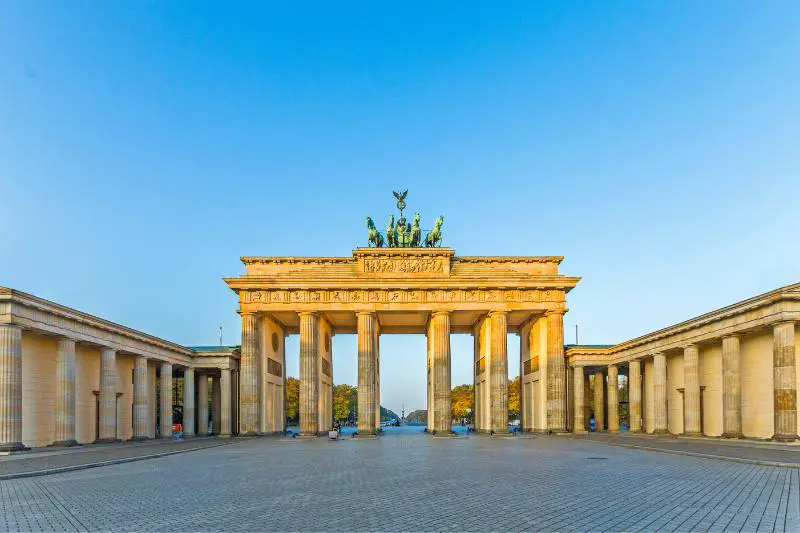
- Begin your adventure at the majestic Brandenburg Gate, a symbol of unity and peace.
- Visit the poignant Memorial to the Murdered Jews of Europe (Holocaust Memorial) and the historic Reichstag Building. Ensure you’ve booked a tour to ascend its glass dome for unparalleled views over Berlin.
- Stroll along the famous Unter den Linden boulevard, soaking in the historical and architectural ambiance.
- Conclude your day in the Mitte district, a culinary hub where traditional German dishes meet global cuisine, perfect for dinner.
Day 2: Berlin
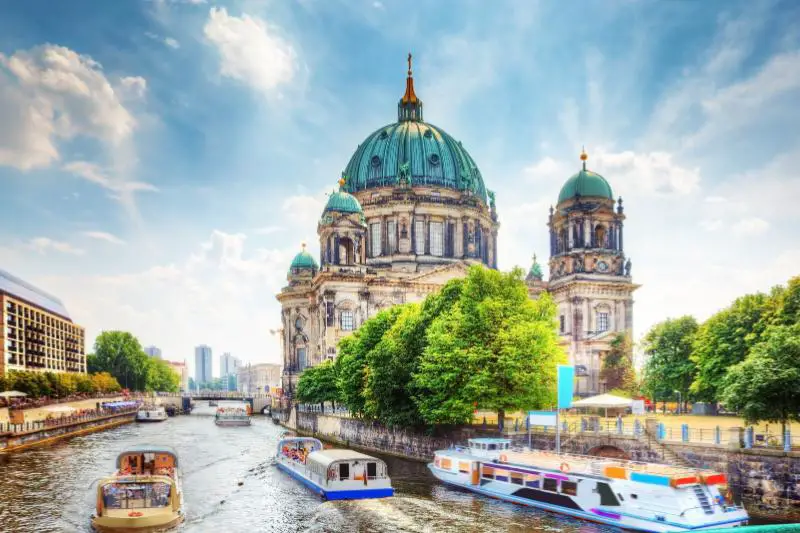
- Begin your morning exploring Museum Island, selecting from renowned institutions like the Pergamon Museum or the Altes Museum for a dive into ancient civilizations.
- In the afternoon, marvel at the Berlin Cathedral‘s grandeur before heading to the East Side Gallery to witness the vibrantly painted remnants of the Berlin Wall.
- Cap off the evening at Alexanderplatz, where Berlin’s nightlife pulsates. Don’t miss the chance to see the city from above by visiting the Berlin TV Tower‘s observation deck.
Berlin
Berlin, a city with a history that spans nearly 800 years, is a vital stop on your journey through Eastern Germany. This city has witnessed some of the most pivotal moments in modern history, from the rise and fall of the Berlin Wall to the reunification of Germany, making it a living museum of sorts where every street corner tells a story.
Starting with the Brandenburg Gate, you’re seeing more than just an architectural marvel; it’s a symbol of unity and peace, having stood through the city’s turbulent times and celebrated moments. Nearby, the Memorial to the Murdered Jews of Europe offers a somber reflection on the horrors of the Holocaust, essential for understanding part of Germany’s complex history.
The Reichstag Building serves not only as a pivotal site of political decision-making but also offers a unique view of the city through its glass dome, symbolizing transparency and democracy. A stroll down Unter den Linden allows you to soak in the historical ambiance that leads you through the heart of Berlin.
Museum Island invites you with open arms if you’re a lover of art and history. Here, the Pergamon Museum and Altes Museum offer insights into ancient civilizations with their extensive collections. The Berlin Cathedral and the East Side Gallery, showcasing art on remnants of the Berlin Wall, highlight Berlin’s resilience and its commitment to freedom and expression.
After a day of exploring, the Mitte district awaits with a culinary scene that’s as diverse as the city itself. Whether you’re in the mood for traditional German dishes or international cuisine, you’re sure to find something that tantalizes your taste buds.
Click here to read more about Berlin.
Day 3: Potsdam and More of Berlin

- Morning: Journey to Potsdam and be enchanted by the rococo splendor of Sanssouci Palace. Wander through its terraced vineyards and ornate gardens.
- Afternoon: Explore more of Potsdam’s historic sites, including the Neues Palais and the captivating Dutch Quarter with its unique red brick buildings.
- Evening: Return to Berlin. If time permits, discover the Gendarmenmarkt, one of Berlin’s most stunning squares, flanked by the French and German Cathedrals.
Potsdam
Potsdam is not just a side trip from Berlin; it’s a historical treasure in its own right, with its roots stretching back to the early Slavic people. Its palaces and gardens are so exceptional that they’ve been recognized as UNESCO World Heritage Sites, making it a must-visit for anyone intrigued by Europe’s royal past.
At the heart of Potsdam’s allure is Sanssouci Palace, once the summer residence of Frederick the Great, King of Prussia. This rococo masterpiece, surrounded by meticulously designed gardens, offers a glimpse into the opulence of Prussian royalty. The New Palace stands in contrast, showcasing lavish baroque architecture and serving as a testament to Prussia’s former might.
The Dutch Quarter adds a different flavor with its red-brick buildings that feel like a slice of the Netherlands in Germany. This area is perfect for a leisurely stroll and is sprinkled with cafes and restaurants, inviting you to taste local and international dishes in a cozy ambiance.
Visiting Potsdam gives you a richer understanding of Germany’s royal history, architectural grandeur, and the cultural interweavings that define this multi-faceted region.
It’s a 33 minute train trip to Potsdam Park Sanssouci and you can take buses to get you closer to the palace.
Day 4: Dresden – The Jewel Box
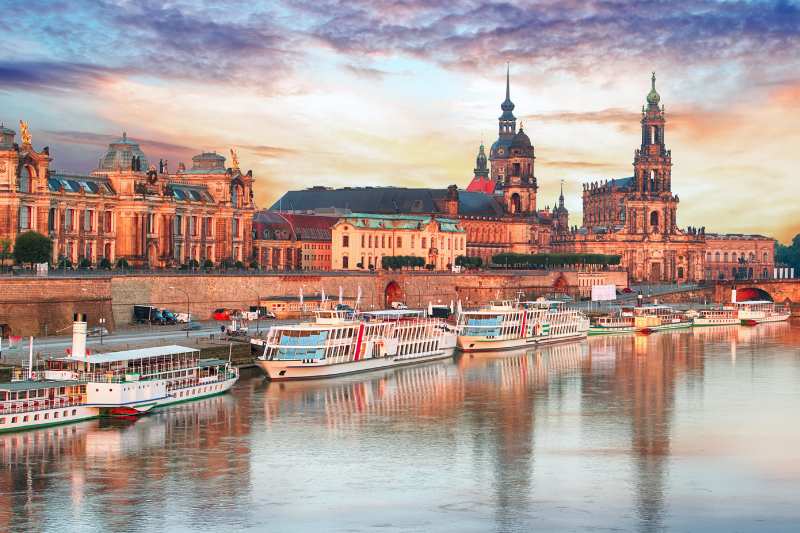
- Morning: Take a train or drive to Dresden first thing. Once you’ve arrived and checked in, start your exploration at the Zwinger Palace, marvel at the Baroque architecture and visit the Old Masters Gallery.
- Afternoon: Make your way to the Residenzschloss (Dresden Castle), home to the Green Vault and the Turkish Chamber, showcasing an extensive collection of treasures. Visit the iconic Frauenkirche and enjoy a leisurely walk along the Elbe River. The Neustadt awaits to show you Dresden’s vibrant, bohemian side by afternoon.
- Evening: Delve into Dresden’s culinary scene. Whether it’s traditional Saxon dishes or contemporary cuisine, the city offers a palate to satisfy every taste.
Dresden
Dresden, often referred to as the “Florence of the Elbe”, boasts a storied history and a rebirth that’s almost as famous as its tragedies. Straddling the picturesque banks of the River Elbe, it’s a city where baroque splendor and a tragic past (when it was destroyed in World War II) fuse into an unforgettable experience.
The Zwinger Palace is a prime example of Dresden’s architectural marvels, with its ornate pavilions and grand galleries housing masterpieces, such as those in the Old Masters Gallery. Not far from here, the Frauenkirche stands as a symbol of reconciliation; once a heap of wartime rubble, now beautifully reconstructed.
And then there’s the Residenzschloss, a Renaissance palace turned museum complex that’s home to treasures like the Green Vault.
For a taste of local Dresden, the Neustadt district offers eclectic dining options where traditional Saxon dishes meet contemporary cuisine.
Adding Dresden to your itinerary isn’t just about witnessing its beauty and grandeur; it’s about understanding the depth of resilience and the power of restoration. It’s a city that teaches you the art of rising from the ashes, all while captivating you with its artistic and culinary delights.
I highly recommend you stay at the Hotel Taschenbergpalais Kempinski in Dresden which is a former palace. Read our full review of staying there here.
There are many trains between Dresden and Berlin with high-speed trains taking around two hours or you can take a regional train in about three hours with a change.
You can find train timetables and options here.
Driving takes around two and a half hours.
Click here to read our full guide to Dresden.
Day 5: Saxon Switzerland National Park
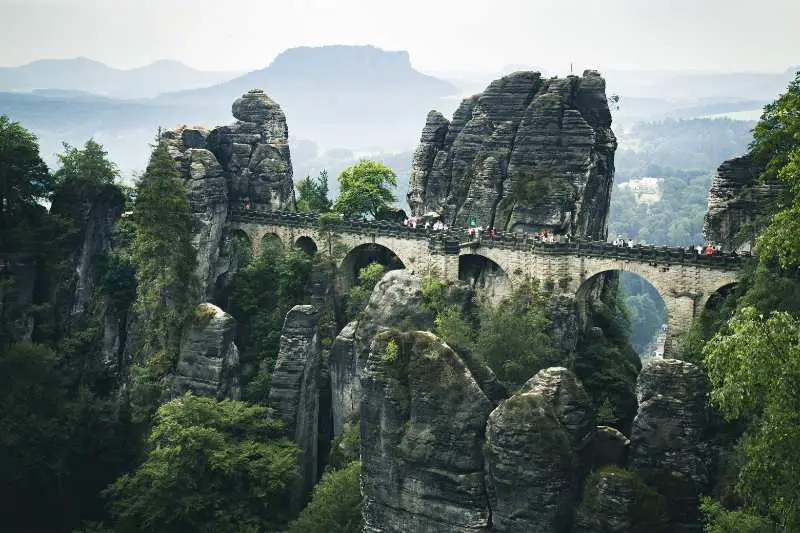
- Full Day: Escape to Saxon Switzerland National Park. Starting at Bastei Bridge for sunrise offers a breathtaking view. Consider a hike around the Schrammsteine for more vigorous adventurers or a serene boat trip on the Elbe for a relaxed pace.
- Evening: Return to Dresden. Consider a tranquil evening by the Brühl’s Terrace for excellent views and a peaceful end to the day.
Saxon Switzerland National Park
Saxon Switzerland National Park offers a dramatic departure from the urban landscapes and historical architecture that define much of Eastern Germany. Known for its breathtaking natural beauty, this park features a rugged landscape that seems like something out of a fairytale.
With its history deeply rooted in the earth itself, dating back millions of years, the area provides a unique blend of natural wonder and historical intrigue.
The Bastei Bridge is a highlight here, arching gracefully over jagged rocks and offering stunning vistas of the Elbe River below. It’s not just a bridge but a gateway to panoramic views that stretch out into the horizon, making you feel like you’re on top of the world. For those seeking adventure, the hike around the Schrammsteine delivers with its challenging paths and rewarding outlooks.
Visiting Saxon Switzerland National Park is about embracing the raw beauty of nature. It’s for those who yearn to breathe fresh air, seek solace in the silence of the forests, and marvel at landscapes carved by time.
You can take the S-Bahn to get you most of the way there, but you will need to walk as well. Driving time is approximately 45 minutes.
Day 6: Leipzig & Its Rich Culture
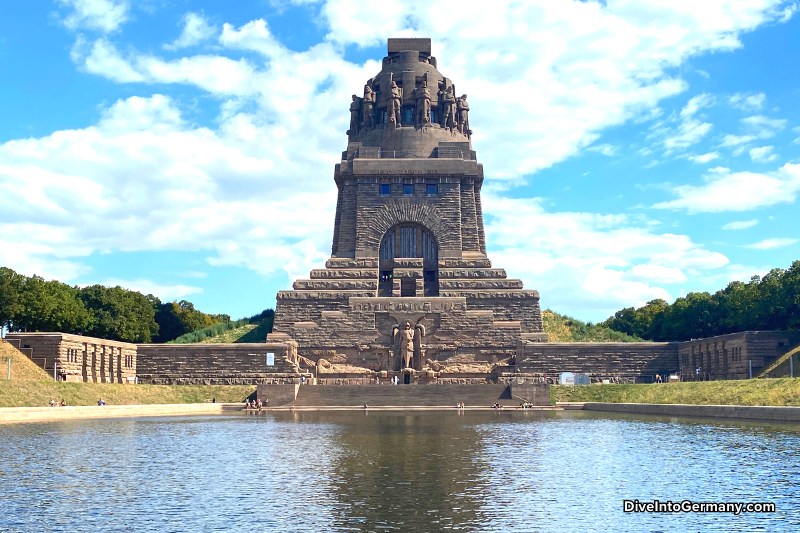
- Morning: Begin at St. Thomas Church, the final resting place of Johann Sebastian Bach. Visit the Bach Museum for insight into the composer’s life. Also, don’t miss the Church of St Nicholas, renowned as the starting point for the Monday Demonstrations which played a crucial role in the fall of the Berlin Wall.
- Afternoon: Afternoon calls for a visit to the Monument to the Battle of the Nations.
- Evening: Experience the Plagwitz District, with its canals and vivid street art. Conclude your day in the lively Südvorstadt, renowned for its extensive range of dining options.
Day 7: Delving Deeper into Leipzig
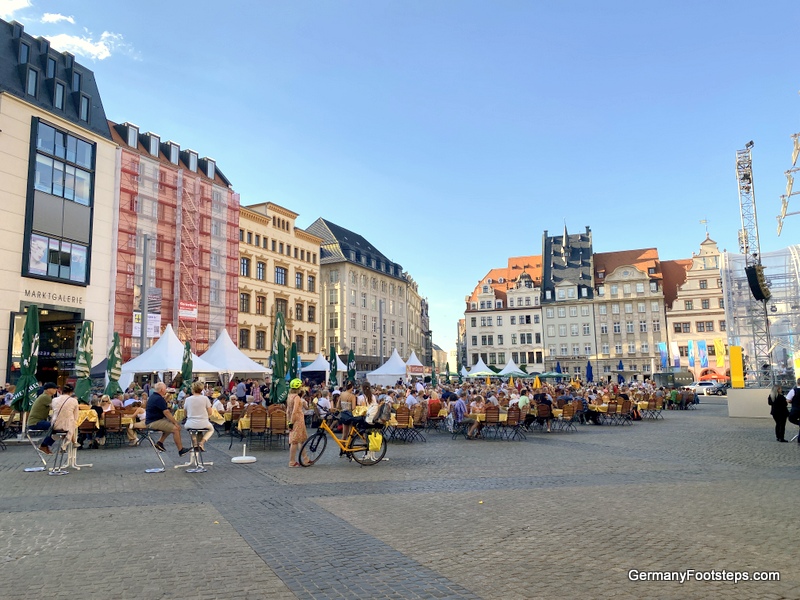
- Morning to Afternoon: Start at Leipzig’s Marktplatz in the heart of the Old Town, ideal for morning strolls amidst historical buildings. Visit the Stadtgeschichtliches Museum located in the Old Town Hall to immerse yourself in Leipzig’s rich history. Also, explore the Zeitgeschichtliches Forum, shedding light on life in the German Democratic Republic.
- Before you leave, revisit Augustusplatz, one of Leipzig’s most expansive squares, reflecting on your journey through Eastern Germany.
Leipzig
Leipzig, a city with a deep historic fabric and a soul enriched by music, literature, and a pivotal role in modern history, demands exploration. Its roots run deep with a history that stretches back to the Holy Roman Empire, and it has been a cradle of culture ever since. It’s also a vibrant city which attracts university students.
The St. Thomas Church is not just any church; it’s where Johann Sebastian Bach worked as a cantor for over two decades, and his resting place lies here. Its significance in the world of classical music makes it a pilgrimage site for music lovers.
Then there’s the Church of St Nicholas, which stands as a beacon of freedom and change, being the starting point for the peaceful Monday Demonstrations that led to the fall of the Berlin Wall.
An integral part of Leipzig’s cultural landscape is the Monument to the Battle of the Nations (Völkerschlachtdenkmal). This towering monument commemorates the 1813 Battle of Leipzig, also known as the Battle of the Nations, which marked a significant turn in the Napoleonic Wars.
Visiting this monument, you’ll be struck not only by its impressive architecture but also by the panoramic views of Leipzig it offers from its viewing platform. It stands as a testament to Europe’s turbulent history and the quest for peace, making it a poignant site for reflection.
The city’s historical and cultural narrative continues at the Zeitgeschichtliches Forum, illuminating Germany’s recent past, particularly focusing on life in the German Democratic Republic. Meanwhile, the Stadtgeschichtliches Museum in the Old Town Hall narrates Leipzig’s rich history, making the complexities of the past accessible and interesting.
Leipzig’s dining scene is as diverse as its heritage, blending traditional Saxon dishes with global culinary trends. Whether it’s sampling local fare in a cozy Plagwitz district café or indulging in gourmet cuisine in Südvorstadt, your taste buds are in for a treat. You could also do a food tour here.
Visiting Leipzig means stepping into a city where history and culture aren’t just remembered; they’re lived and breathed. From the historical gravitas of its churches and museums to the vibrant, contemporary pulse of its arts scene and dining, Leipzig engages and inspires. It’s for those who appreciate the confluence of history, culture, and innovation, making it an essential part of any Eastern Germany itinerary.
I highly recommend you stay at the Adina Apartments Leipzig. These are in a super convenient location and provide you with apartment-style accommodation while still having facilities such as a pool. Read our full review of staying there here.
There are regular trains between Dresden and Leipzig taking 1.25 – 1.5 hours depending on if you opt for a high-speed train or not.
Find timetables and options here.
Driving takes around 1.5 hours.
Click here to read our full guide to Leipzig.
Map Of Your Eastern Germany One Week Itinerary
The following maps shows you everywhere you will go in this week.
In wrapping up your journey through Eastern Germany, it’s evident that this region offers an enriching tapestry of cultural history, modern vibrancy, and natural beauty. From the historic streets of Dresden, through the evocative landscapes of Saxon Switzerland, to the dynamic buzz of Berlin, each day has unveiled a new layer of Germany’s compelling past and its dynamic present.
This one-week itinerary only scratches the surface of Eastern Germany’s abundant treasures. Yet, it provides a well-rounded glimpse into the diverse experiences that await travelers. Whether you’re drawn by the allure of history, the call of nature, or the vibrancy of city life, Eastern Germany is a destination that promises memorable adventures and insights at every turn.
You may also enjoy our one week itinerary for Berlin and surrounds. It’s similar but you can return to the same hotel every night. We also have an itinerary for Northern Germany here, Bavaria here and Central Germany here. Learn more about the attractions in Eastern Germany with this guide to the best places to visit. You can also find all our travel guides to Eastern Germany here.


